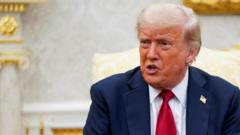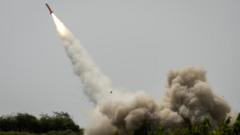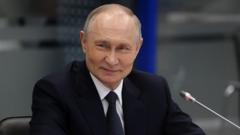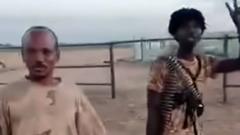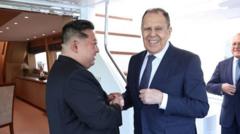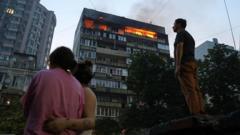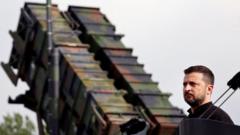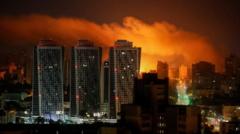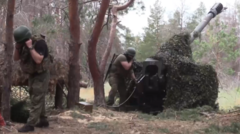Gen. Oleksandr Syrskyi announced that Ukrainian troops have stabilized the front line in Sumy, resisting Russian advances. While recent successes were noted, concerns over inadequate fortifications persist as the volatile landscape of warfare continues to evolve.
Ukrainian Forces Secure Gains Against Russian Offensive in Sumy Region
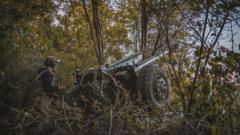
Ukrainian Forces Secure Gains Against Russian Offensive in Sumy Region
Ukrainian military halts Russian advance in northeastern Sumy, highlighting the need for enhanced fortifications amid fluctuating battlefield dynamics.
Ukrainian military officials have confirmed a significant development in the northeastern Sumy region, revealing that Ukrainian forces have successfully halted a sustained Russian offensive. General Oleksandr Syrskyi, Chief of the Army, stated during his visit to frontline positions that the line of combat has now been "stabilised," effectively choking off Russia's summer military push in the area.
Despite this positive news, Syrskyi emphasized the vital need for further fortifications in the region to bolster defense efforts. His remarks come in the wake of rising apprehensions regarding inadequate protective structures, as highlighted by Border Guard representative Andriy Demchenko, who described the current situation as "volatile."
Sumy, which abuts the Russian region of Kursk, serves as a critical tactical point, particularly after the Ukrainian forces executed a surprise offensive last year that temporarily seized parts of Kursk. Since early 2024, Russian military pressure around Sumy has intensified, leading to allegations that around 50,000 elite Russian troops had been mobilized to create a dedicated buffer zone along the border, a plan underscored by President Vladimir Putin's commitment to enhancing security in bordering Russian territories.
The call for urgent fortifications comes from both military and civilian sectors, where delays in construction have sparked public concern. Syrskyi reassured citizens that constructing anti-drone corridors, establishing “kill zones,” and improving logistics for frontline troops are already underway, but acknowledged the challenges in expediting these enhancements.
The initial inadequacies in fortifications experienced during the earlier phases of the Russian invasion allowed for substantial territorial gains by Moscow. As reports from DeepState analytics suggest ongoing combat in regions lacking proper defenses, the necessity for immediate action to remedy these vulnerabilities has become increasingly pressing.
In recent months, Russian forces have claimed control over several villages in Sumy and escalated missiles strikes targeting the urban populace, stating that a buffer zone of 8-12km is now established. The fourth year of Russia's full-scale invasion has increasingly been characterized by drone attacks targeting major Ukrainian cities, including Kyiv, raising alarms about the efficacy of air defenses.
While recent diplomatic conversations have resulted in significant prisoner exchanges, they have not yet produced meaningful steps toward achieving a ceasefire. Meanwhile, European and Canadian allies, including commitments from NATO, have pledged substantial financial aid to support Ukraine during these challenging times, although uncertainty looms regarding the unwavering support from U.S. leadership. As Kyiv prepares for potential new challenges, discussions about enhancing air defense capabilities remain a critical focus, with promises of potential U.S. military aid on the horizon.





